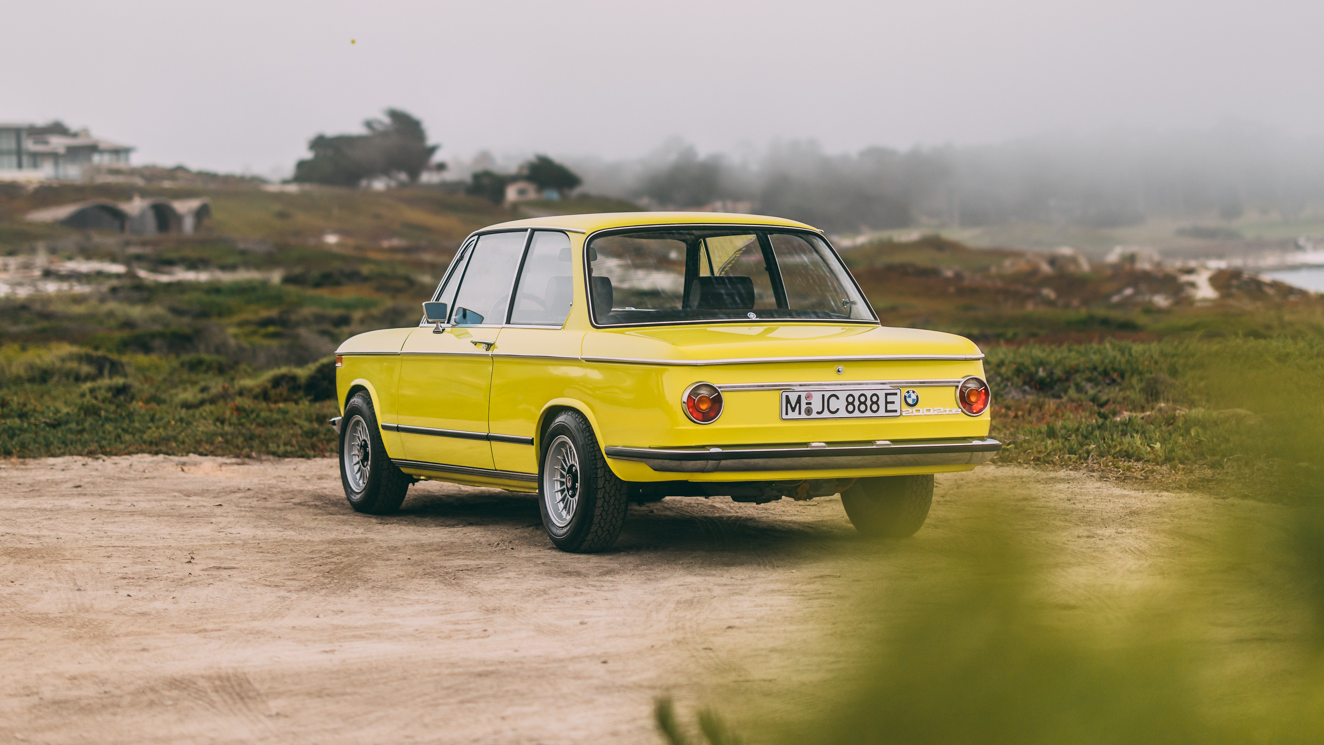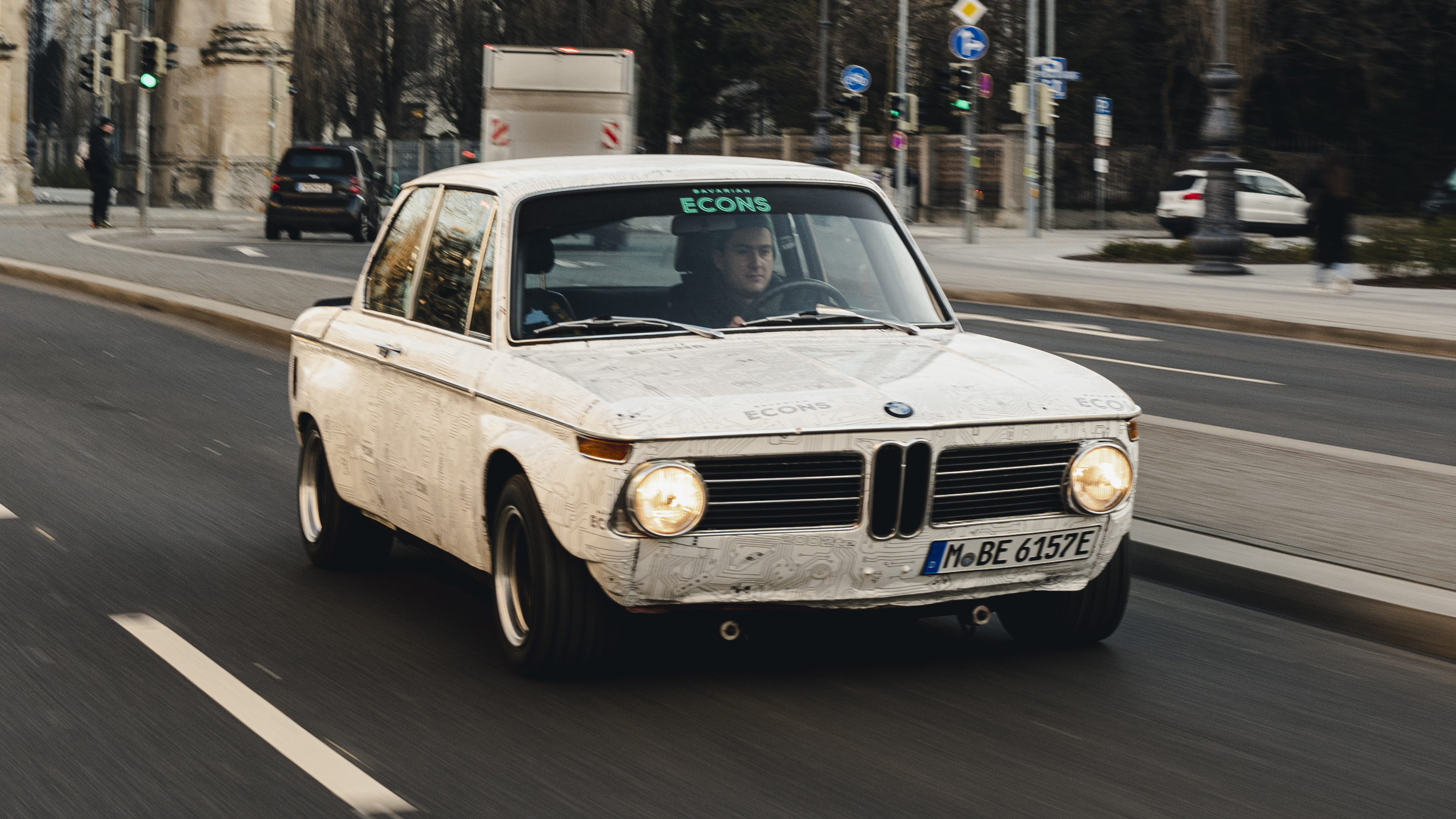
Bavarian Econs 2002te review: electrified BMW 2002 resto driven
What’s this adorable little thing?
It’s the Econ 2002, a product of Bavarian Econs. In short, it’s a classic BMW 2002 coupe that’s had the restomod treatment. The electric restomod treatment.
Crank up the comments section, then…
Yep, these things are certainly divisive. Bavarian Econs knows as much. Its founders appreciate the trepidation surrounding such projects and insist they’re unleashing ‘02s that might otherwise sit dormant in a garage because, like all flavours of classic car, they’re not the simplest of things to keep running.
“Classic car owners wait all week to go into the garage to drive their car on a Sunday,” says Nicolas Navarro, who formed the enterprise with his brother Edgar. “People want their car to just start. This is a problem we can solve. Plus there are enough ‘02s – they were built in their hundreds of thousands. We’ll convert a maximum of 30 cars.”
Nearly a million ’02 Bimmers were made, in fact, and if you’re scooping out the engine and making it an EV, it doesn’t matter whether you start with a 1502, 1602, 1802 or 2002.
I’m sure it’s more than just ‘scooping’…
Conversion times vary depending on the rustiness of the ’02 you’re providing, but you can anticipate around a year of the car bombilating between BMW Group Classic and Bavarian Econs’ workshops as they spruce it up and switch it to fully electric propulsion.
The aim is to salvage as many components as possible and only replace what’s truly necessary. Better for the overall carbon footprint. A gorgeous Momo Prototipo steering wheel and coddling sports seats are among the mods, too, but can be swerved if you want to keep your beloved car aesthetically pukka. The most notable interior change is a sympathetically designed swap from a rev-counter to a battery gauge.
The batteries themselves are split between the front and rear – aiding 50/50 weight distribution – with a little slicing of metal needed to slot them in the boot. A single electric motor latches to the rear axle, requiring new mounts. The Econs team welds shut any chassis holes left over from the conversion – where a manual gear stick would protrude from the transmission tunnel, for example – to ensure optimal refinement.
What power are we talking?
The front axle motor from a Tesla Model S is fitted to the rear axle, albeit detuned to circumvent a larger mechanical overhaul or more substantial batteries. The brakes are standard ’02 items while the suspension is upgraded to an adjustable KW setup for necessary stiffness. Batteries are sourced from either the BMW i3S or Mini Electric parts shelf, depending on which tune you go for. Such crucial components are all brand new.
Opt for the entry-level 2002te and you get a 33kWh battery hooked up to a 180bhp/125lb ft motor, good for hustling its 1,100kg to 62mph in 6.2 seconds. The 2002tee, meanwhile, combines a 45kWh battery and 250bhp/162lb ft motor for a 1,200kg mass and a hot hatch-whooping 4.5s acceleration run. Both cars will cover around 125 miles on a full battery before recharging to 80 per cent in 45 minutes.
Top Gear
Newsletter
Thank you for subscribing to our newsletter. Look out for your regular round-up of news, reviews and offers in your inbox.
Get all the latest news, reviews and exclusives, direct to your inbox.
Crowning the range is the 2002 turbo e, which takes the 45kWh battery and 250hp motor and adds the gnarlier brake kit from the original 2002 Turbo as well as delectable BBS wheels and a more boisterous body kit.
Which have you driven?
We’ve kept it simple and tried the company’s hard-working 2002te production mule; it may not represent a finished Econ, but feels pretty marvellous nonetheless. Bavaria is nudging double minus figures on my weather app as I get behind the wheel, but the ringing endorsement is that it really doesn’t matter. This car is a hoot.
Power delivery is linear and satisfying, foregoing the wallop of a modern EV, though a punchy power-to-weight ratio even in entry spec ensures a mischievous scurry of wheelspin if you get carried away. Acceleration is always brisk and the throttle responds with a crispness modern EVs rarely offer, if ever. I’ve no doubt the 2002te would slide with the typical abandon of an old Bimmer given an environment more appropriate than downtown Munich, but its makers do claim better traction thanks to the extra weight over its rear axle. No need to sling a sandbag in the boot on frosty days in this old BMW.
So it’s easy to drive?
Power steering is optional, but no customers have yet taken the plunge. There’s a clear gulf between the physical heave-ho of shuffling its non-assisted wheel and the simplicity of turning the drive dial to D before sailing forwards on the back of a smooth, one-speed transmission. Not a criticism as such, merely an observation; Econs suspects a lot of its buyers will use their car as a chic urban runabout where power assistance might feel more user-friendly. But customers perhaps feel it’s a cop-out, too. “‘Keep it like this,’ they say, ‘I’ll just work out a little bit!’” smiles Nicolas.
It's easy to acclimatise in such a deft, agile car, at which point the whole thing becomes joyously simple to drive. You really have to bury the throttle into the carpet to get the rear wheels in a tizz and the precision of its pedal means that won’t happen by accident. Top marks for the brake regen, too; almost strong enough for you to treat this as a one-pedal car in urban driving, but without ever feeling aggressive.
It’s all wonderfully refined too. Even in this prototype stage, the whine of the motor is impressively hushed and the interior ambience as adept as you could hope in a car now over 50 years old. Clamp a smartphone to the dashboard and you’d happily tool about in one every day.
Even with such a modest range figure?
Nicolas admits the car’s 200km range is the bare minimum people expect from an EV, but eking out more would mean bigger batteries and thus buggering up the agility – it’s just 100 kilograms stockier than a typical stock 2002. And buyers with this kind of budget are likely treating their Econ 2002 as a novel new toy among a sprawling collection.
Um, what’s the cost?
It’s €140,000 for a 2002te or €180,000 euros for a 2002tee, both figures before VAT and without a donor car. So you’re looking at £150k as an absolute entry point, with most projects tripping past £200k. The indulgent 2002 turbo e, meanwhile, is a stocky €270,000.
Each car is bespoke to its buyers’ whims, however, so while it’s not insubstantial money, nor is it out of kilter with other restomods on the market. Electric or not.
Will they do anything cheaper?
The next project is an E30 3 Series, which will be less bespoke and more affordable, perhaps as ‘low’ as £100,000 with no need to bring your own car. A dashing alternative to a brand-new BMW i4 for those unimpressed by modern Munich design principles, perhaps.
“If in five years the EU decides it won’t reach its electric car targets, and people get bored of EVs, maybe we will think about something else,” admits Nicolas. “But as long as the EV industry keeps on moving as it is, this is our plan.” Whatever your opinion on electric restomods like the Econ 2002, they’re not disappearing anytime soon.
Featured

Trending this week
- Car Review
BMW 1 Series





